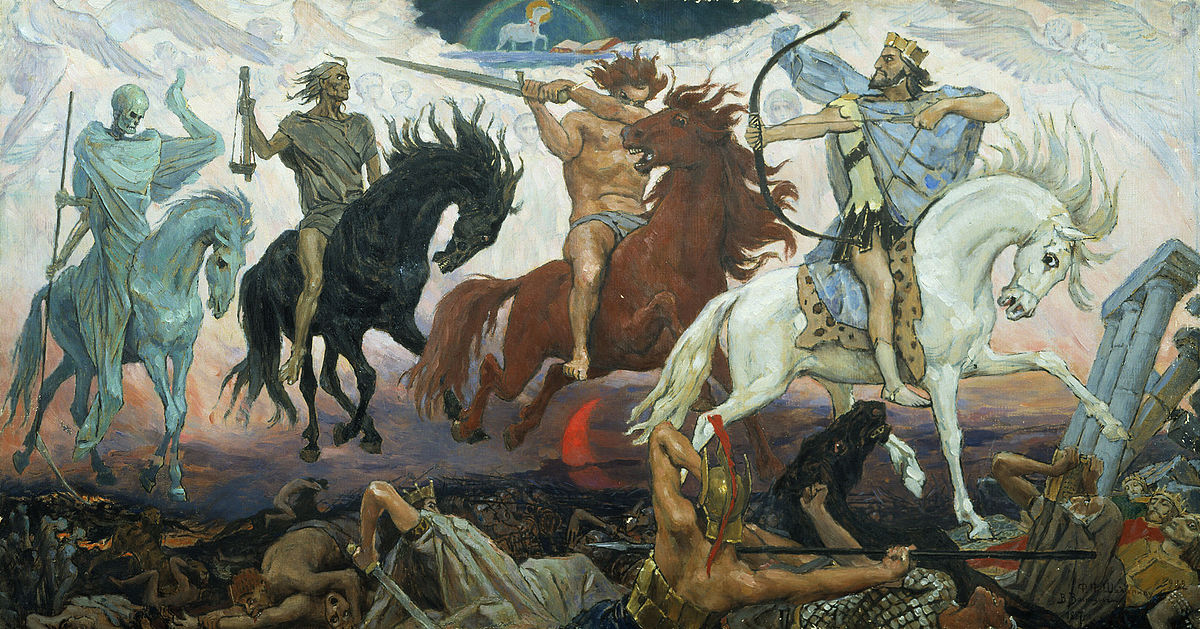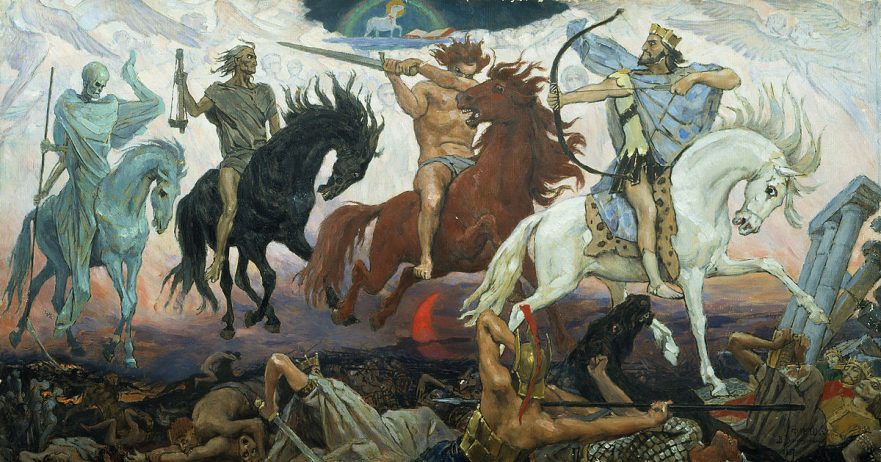In Revelation 6:1-8, upon the Lamb’s opening of the first seal, four horsemen appear: the first rode a white horse, and “had a bow; a crown was given to him, and he came out conquering and to conquer”; the second rode a red horse, and was given power “to take peace from the earth, so that people would slaughter one another; and he was given a great sword”; the third rode a black horse, and “held a pair of scales in his hand,” signifying a great famine; and the fourth rode a pale horse: “Its rider’s name was Death, and Hades followed with him.” These four horsemen, we are told, “were given authority over a fourth of the earth, to kill with sword, famine, and pestilence, and by the wild animals of the earth.”
Modern readers of the Book of Revelation usually assume that the key to understanding the book lies in discovering a one-to-one correspondence between the figures it presents, and real-life figures. Most readers, however, recognize that the second, third, and fourth horsemen are not real figures, but personifications of calamities. But what about the first horseman (the conqueror on the white horse)? Why do most readers think that the first horseman answers to a different interpretive device—that a real historical figure is portrayed there? The assumption, I believe, is wrong. The correct interpretation of the four horsemen appears only when we consider the four together as a unified symbol of widespread calamity.
Paid Content
Premium Members and Friends of JP must be logged in to access this content: Login
If you do not have a paid subscription, please consider registering as a Premium Member starting at $10/month (paid monthly) or only $5/month (paid annually): Register
One Time Purchase Rather Than Membership
Rather than purchasing a membership subscription, you may purchase access to this single page for $1.99 USD. To purchase access we strongly encourage users to first register for a free account with JP (Register), which will make the process of accessing your purchase much simpler. Once you have registered you may login and purchase access to this page at this link:

Four Horsemen of Apocalypse painted by Viktor Vasnetsov (1887). Image courtesy of Wikimedia Commons.
































































































Comments 1
Very useful and insightful article! Thank you very much!